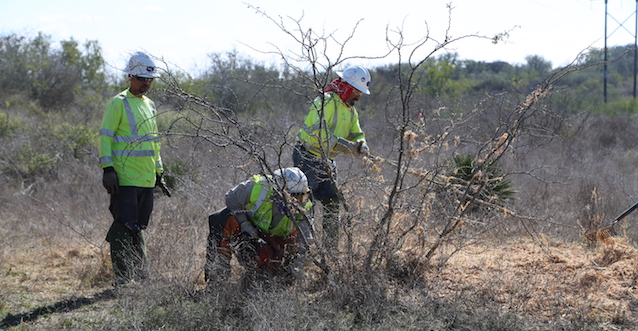What’s been bugging you this season?
Turns out, lots of things have.
Back in August we asked our Facebook community of tree care professionals what pests have been causing them trouble. We received several dozen responses naming many different bugs and diseases in North America.
It won’t surprise anyone that the emerald ash borer was the most frequently mentioned pest. We’ve written about that before and also a few of the other top invasive species.
So here’s information about some of the other pests and diseases you told us about. Sources are linked to within each section.
Aphids
Aphids are sap-sucking insects that are commonly green, although some species are white or black. They are very destructive to plants worldwide. Signs of damage include decreased growth rates, mottled leaves, yellowing, stunted growth, curled leaves, browning, wilting, low yields, and death. Aphids can transmit disease-causing organisms like plant viruses. The green peach aphid, for example, carries and transmits more than 110 plant viruses.
Bagworm
Bagworms wreak havoc on conifers and can also attack other tree species. The telltale sign is not the moth itself but the case, or bag, it creates that hangs from the host plant. The case is made of silk and items from the host, like twigs and leaves. In the fall, the bags turn brown, making them easier to detect. Bagworms have massive appetites, and the damage they cause to foliage will eventually kill the host tree if left untreated. Bagworms thrive in the eastern U.S. and also have been found in other countries.
Oak wilt
Oak wilt is a fungal disease that is spread by insects or by connections between tree roots. Symptoms generally consist of leaf discoloration, wilt, defoliation and death. Oaks with oak wilt are often easily spotted by their dead crowns, compared with a green canopy of healthy trees. Oak wilt can rapidly kill trees in a single season. The disease is common in the Midwest, although it also is found in much of the eastern U.S. and in pockets in the South.
Poplar borer
From the same subfamily, Lamiinae, as the Asian longhorned beetle, the poplar borer can be identified by its grayish-blue color with yellow or orange markings, but especially the antennae nearly as long as its body. It is found throughout the U.S. and Canada and attacks poplars and, occasionally, willows. Symptoms include branches and trunks that are swollen and scarred with holes. Areas around the hole eventually blacken and appear varnished.
Spruce budworm
There are nearly 40 species of spruce budworms, which are a type of moth, but two in particular cause extensive damage to evergreens in North America. These are the western spruce budworm and the eastern spruce budworm. The direction in their names indicates where in the U.S. and Canada they are most commonly found. Dead branches and sparse foliage are indicators of each species. Both western and eastern spruce budworm larvae eat new growth first before turning to older needles.
